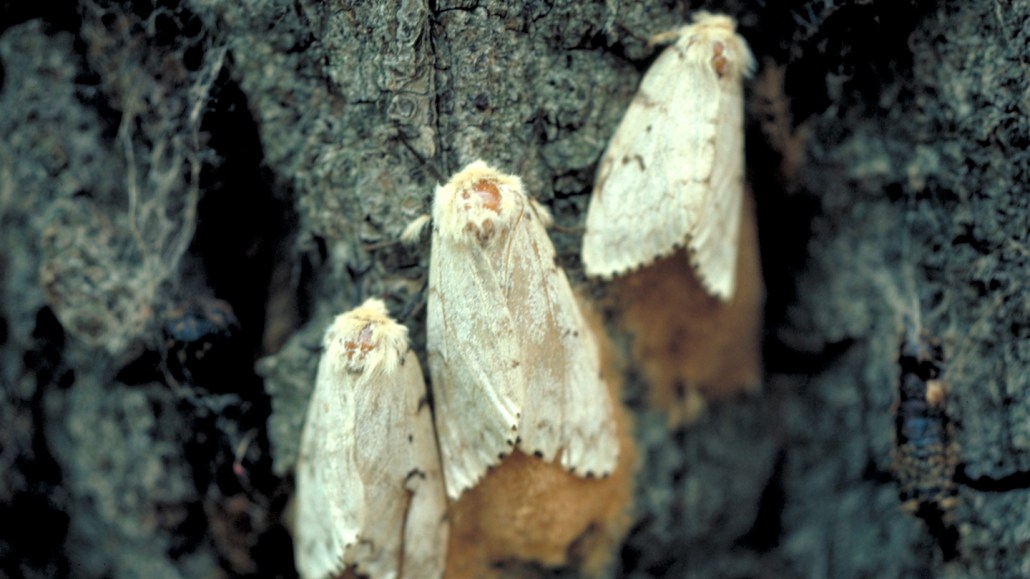
The invasive spongy moth (pictured) used to be called the gypsy moth, a pejorative term that entomologists have replaced with a name that references the insect’s porous egg casings (seen here as brown masses beneath the moths).
John Ghent/Bugwood.org (CC BY 3.0)






